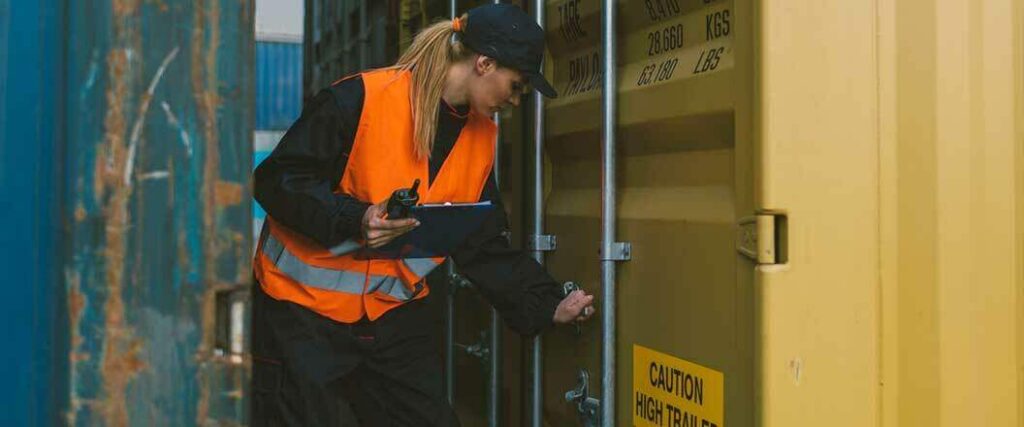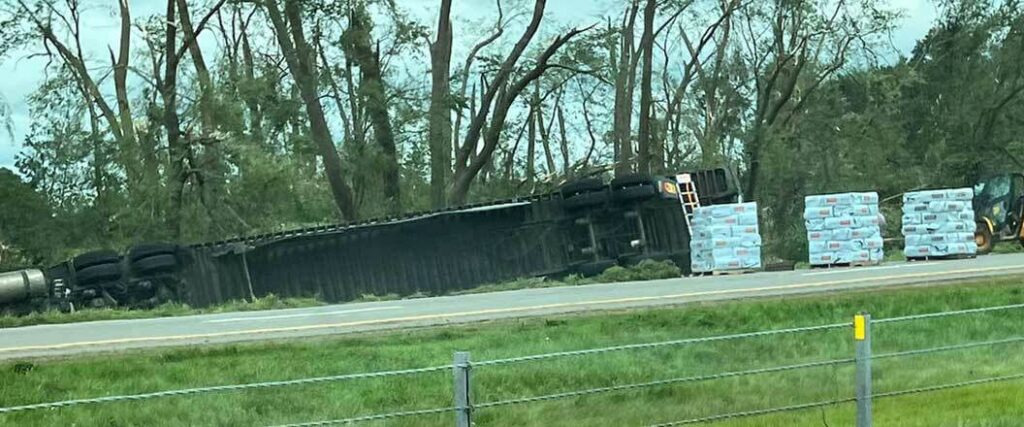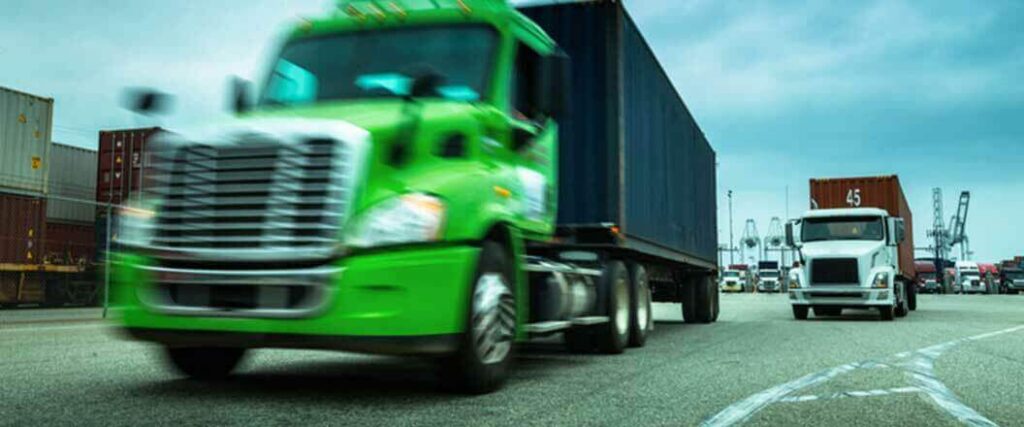



Inventory protection becomes a front-and-center concern when hurricanes, tornadoes, and floods are in the forecast. These weather events can rip through buildings, flood storage areas, and turn loose items into dangerous projectiles. Keeping your merchandise and inventory safe under these circumstances is a challenge no business owner can ignore.
The Federal Emergency Management Agency (FEMA) warns that extreme weather events are becoming more frequent and severe. Inventory protection in the face of hurricanes, tornadoes, and floods, is a crucial element of any business plan. Structural design, technology, and emergency logistics are important aspects of this preparation.
If you’re concerned about protecting your business’s inventory from severe weather, we’re here to help. Join us as we review basic merchandise protection methods and advanced strategies for specific cases of extreme weather.

Protecting your inventory from natural disasters begins with preemptive planning and proactive measures. If you have advance warning of such an event, there are steps you can take to minimize potential losses.
Let's review these basic strategies in detail:
Out of all these steps, temporarily storing your goods away from the path of destruction is the most effective. This is easier to accomplish by leveraging technology to stay informed about potentially damaging storms.
Some severe weather systems, such as hurricanes, can be tracked days in advance. This offers time for alert and informed businesses to safeguard their merchandise. For events like flash floods and tornadoes, even a few minutes or hours worth of warning can make a huge difference for business owners.
If you live in an area subject to extreme weather conditions, the following tech-based solutions should be part of your toolkit.
There are hundreds of weather notification apps available for smartphones. Make sure you have one handy, along with a weather radio, to stay up to date on the most current weather news.
Preparation is key to protecting inventory from damaging weather. While the previously mentioned strategies are effective, the design and condition of your warehouse or place of business plays a huge role in how well your goods can withstand extreme conditions.
To get a more in-depth look at how a building’s structural stability impacts protection of merchandise, we’ll examine three common types of natural disasters: hurricanes, flooding, and tornadoes.

With gusts that can exceed 250 MPH, hurricanes are one of the most potent and dangerous natural disasters in the world. If you’re located in an area vulnerable to these dangerous storms, such as the southern U.S. or Atlantic seaboard, hurricane-proofing your establishment is crucial. Otherwise, years of work can be swept away in a matter of hours.
There are many methods you can employ to minimize a location’s vulnerability to hurricanes. Most of these involve using sturdy, specialized materials to build or reinforce your place of business.
Before detailing these methods, let’s take a look at what one of these powerful storms can do.
Even category one hurricanes and tropical storms can cause significant damage due to how long they can last. Sustained winds can bring down limbs, trees, and power lines. These hazards can easily damage your business and, by extension, your inventory.
Other damaging effects associated with severe storms and hurricanes include:
Fortunately, using the right construction materials and methods can mitigate damage caused by hurricanes.
Before we discuss how to prevent hurricane damage, we must address the term “hurricane proof”. This is something of a misnomer. While a building can be made to resist the forces of a cyclone, it would be inaccurate to classify any structure as 100-percent immune to hurricane damage.
With that said, choosing a storefront that’s built to resist sustained wind and rain is still your first line of defense in protecting your inventory. Look for features such as:
If your building does not contain any of these features, some of them can be retrofitted onto the structure. Consult with a construction professional to determine the extent to which you can upgrade your existing place of business for improved hurricane resistance.
Want more protection? Check out our article on hurricane cargo insurance to learn more about how you can protect your precious inventory.

If you live in an area susceptible to flooding, you know how quickly a flood can occur. While not as dramatic as the powerful winds generated by hurricanes and tornadoes, floods can easily destroy a store’s inventory. Even items that aren’t directly affected by the standing water can be ruined by resulting mold and mildew.
To keep your merchandise safe from flooding, it’s wise to start with the right kind of building design and infrastructure.
Since floods can come seemingly out of nowhere, it’s unlikely you’ll have time to react and protect your inventory. For that reason, it’s important for your store or warehouse to have the following features.
With these three elements of flood-resistant building design in place, your inventory will be well-defended against flooding.

Like hurricanes, tornadoes generate high-speed winds that can do significant structural damage. Unlike hurricanes, tornadoes occur without several days notice. They can descend, destroy entire towns, and dissipate within minutes.
To illustrate the economic impact of this meteorological disaster, consider the five most damaging tornadoes on record in the U.S.
| Location | Date | Cost of Damages in USD |
| Joplin, MO | 5/22/11 | 2.8 billion |
| Tuscaloosa, AL | 4/17/11 | 2.45 billion |
| Moore, OK | 5/20/13 | 2 billion |
| Hackleburg, AL | 4/27/11 | 1.5 billion |
| Joplin, MO | 5/8/08 | 1.4 billion |
If your place of business experiences weather that can spawn tornadoes, it’s vital to be aware of their potential for destruction and what you can do to keep your inventory from becoming a property damage statistic.
Tornadoes are violent and unpredictable, often striking with little warning. Understanding the potential vulnerabilities your warehouse or store may have during a tornado is the first step toward reducing damage.
Three potential dangers during a tornado are:
With a clear understanding of these dangers, the next step is taking action to ensure the safety of your inventory and the people who manage it.
When you think about making a building tornado-resistant, windows and structural design come into play. Here's what you need to know:
The good news is that if your building is made to withstand tornadoes, it’s probably just as resistant to hurricanes. Concrete, steel, and shatterproof glass will all go a long way toward protecting your merchandise and avoiding financial losses.

Even with excellent preparation, businesses can struggle in the wake of a disaster. For instance, losing power can cause some stored goods to spoil if they aren’t relocated. That’s why it’s smart to partner with a Third Part Logistics (3PL) provider for assistance once extreme weather has passed.
There are many advantages to working with a 3PL, including:
When a disaster strikes, you might need to quickly pivot your logistics and inventory management strategies. With a little help from us, you’ll be able to do just that.
While extreme weather can be unavoidable, proper preparation will set you up to protect your business and its inventory. At Emergency Management Logistics, we offer a comprehensive range of services to help you respond to extreme weather events.
Trust EML for assistance with:
Call our emergency logistics experts at (855) 420-9447 today or request a risk-free quote online. We’re ready to help you and your business ride out the storm.